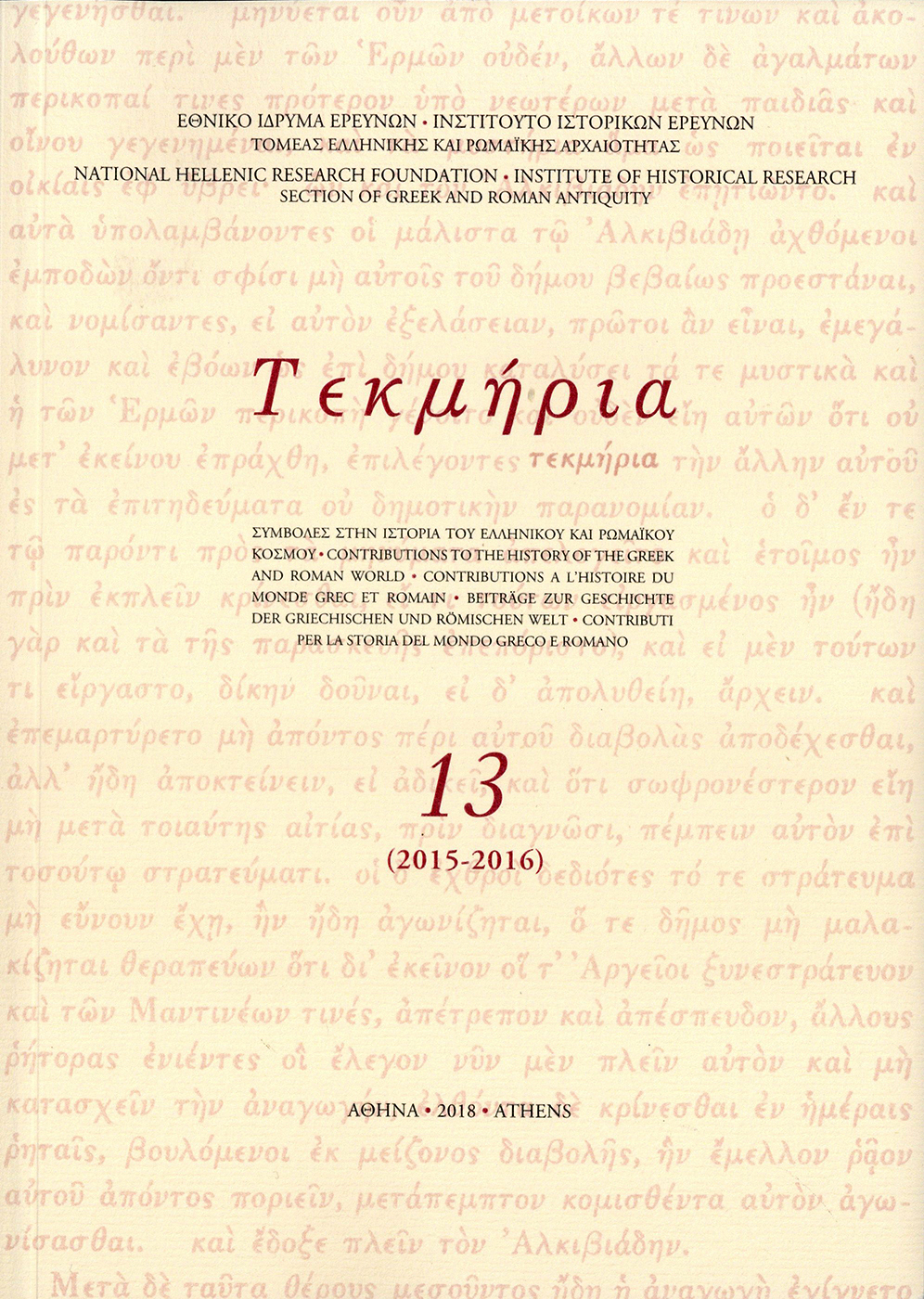Σύντροφος: un Terme Technique Macédonien
Περίληψη
Σύντροφος is a term familiar to epigraphists who study Greek inscriptions of the Roman period, especially from Asia Minor, and also to epigraphists and historians of the Hellenistic period. In the former case the term applies to actual foster brothers, to wit children who have been reared together, but also to persons engaged in other forms of professional or affective relationships. Students of the Hellenistic period, on the other hand, are in disagreement. Some interpret this term as an honorific title denoting a fictitious kinship with the king, while others maintain that it qualifies persons of the same age as the king who have actually been brought up with him. The institution of syntrophoi is attested in almost all Hellenistic courts with the exception of the Ptolemies. In Macedonia the relevant evidence extends from the reign of Philip II to that of Philip V. The parallelism between courtly and civic educa- tional institutions (βασιλικοὶ παῖδες and παῖδες in the civic gymnasia, βασιλικοὶ κυνηγοὶ and civic ἔφηβοι, βασιλικοὶ νεανίσκοι and νέοι in the civic gymnasia) ought to have prepared us to expect a civic equivalent to royal σύντροφοι. Such an equivalent is now attested in Philip V’s diagramma regulating military ser- vice. It appears thus that the Macedonian “civic” syntropohoi, like the Spartan mothakes, were boys of inferior social or financial status who were raised in the family of well-to-do boys of the same age, were thus enabled to receive the same education as they in the gymnasia, and could in case of need replace their foster brothers in their miltary obligations.
Λεπτομέρειες άρθρου
- Πώς να δημιουργήσετε Αναφορές
-
Χατζόπουλος Μ. (2017). Σύντροφος: un Terme Technique Macédonien. Τεκμήρια, 13, 57–70. https://doi.org/10.12681/tekmeria.10758
- Τεύχος
- Τόμ. 13: (2015-2016)
- Ενότητα
- Άρθρα

Αυτή η εργασία είναι αδειοδοτημένη υπό το CC Αναφορά Δημιουργού – Μη Εμπορική Χρήση – Παρόμοια Διανομή 4.0.
Οι συγγραφείς των άρθρων που δημοσιεύονται στα Τεκμήρια διατηρούν τα δικαιώματα πνευματικής ιδιοκτησίας επί των άρθρων τους, παραχωρώντας στο περιοδικό το δικαίωμα της πρώτης δημοσίευσης. Άρθρα που δημοσιεύονται στα Τεκμήρια μπορούν να χρησιμοποιούνται ελεύθερα για μη κερδοσκοπικούς σκοπούς, χωρίς δικαίωμα τροποποίησης (δημιουργία παράγωγου έργου), με αναφορά στο συγγραφέα και στην πρώτη δημοσίευση. Το Εθνικό Ίδρυμα Ερευνών διατηρεί το δικαίωμα να δημοσιεύει, να αναπαράγει, να παρουσιάζει στο κοινό, να διανέμει και να χρησιμοποιεί άρθρα που δημοσιεύονται στα Τεκμήρια σε οποιοδήποτε μέσο και μορφή, είτε μεμονωμένα είτε ως μέρη συλλογικών έργων, για όλο το χρόνο διάρκειας προστασίας της πνευματικής ιδιοκτησίας και για όλες τις χώρες του κόσμου. Αυτό περιλαμβάνει, ενδεικτικά και όχι αποκλειστικά, το δικαίωμα δημοσίευσης των άρθρων σε τεύχη του περιοδικού Τεκμήρια, αναπαραγωγής και διανομής μεμονωμένων αντιγράφων των άρθρων, αναπαραγωγής ολόκληρων των άρθρων σε άλλη έκδοση του ΕΙΕ, και αναπαραγωγής και διανομής των άρθρων ή της περίληψης τους με χρήση πληροφορικού συστήματος αποθετηρίου.



